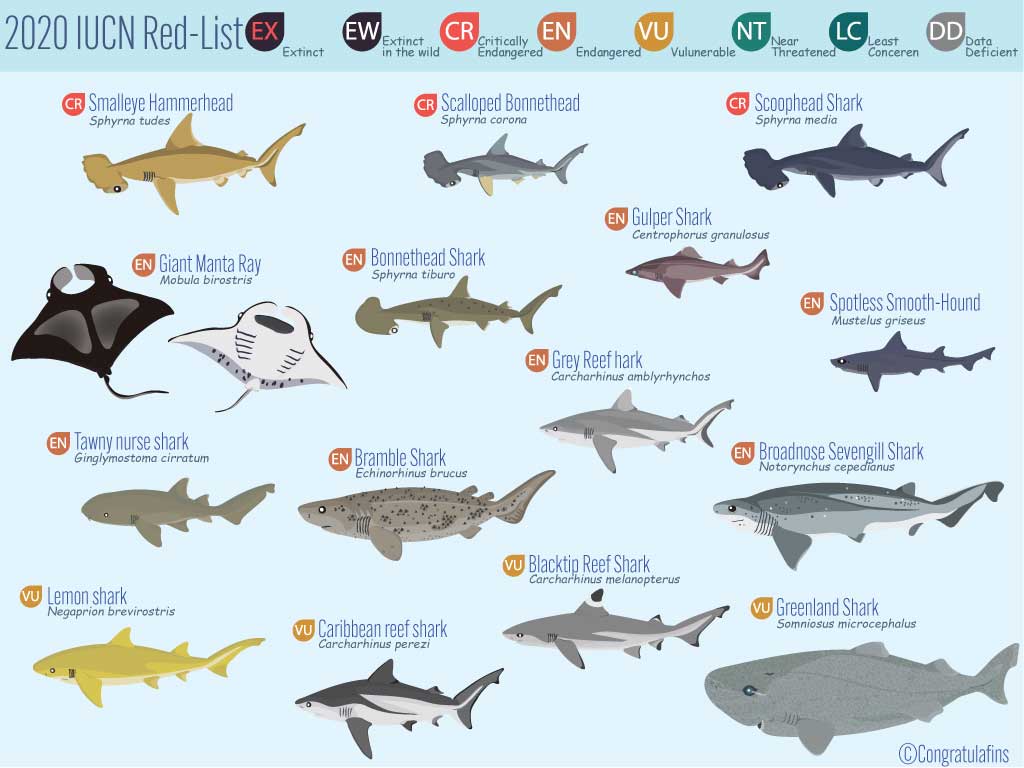IUCN Red List Updated Nearly 1/3 of Sharks & Rays
© Copyright Congratulafins
New updates on the conservation status of sharks and rays released today by the International Union for Conservation of Nature (IUCN) show that 39 additional species are now facing a risk of extinction in the wild. This takes the total of all sharks and rays categorised as Vulnerable, Endangered, or Critically Endangered to 355.
Most alarmingly, IUCN reveals that one species of ray may have already gone extinct, as the Java stingaree (Urolophus javanicus) is now assessed as Critically Endangered (Possibly Extinct). A unique ray from the coast of Java in Indonesia, it was previously listed as Critically Endangered (2006). This endemic species has not been seen since the end of the 19th century when it was originally discovered.
Eight out of nine species that are “uplisted” to the Critically Endangered category – meaning they are just one step away from extinction – are rays (mostly guitarfishes and eagle rays). This continues the worrying trend that although rays may be less known and do not receive as much attention, they are doing even worse than sharks as a consequence of overfishing and overall lack of fisheries management.
Nonetheless, it is not just the lesser-known species featuring in this round of Red List updates. A few reef sharks that used to be very common and abundant, and are particularly popular among divers, are now threatened. This includes the Caribbean reef shark (Carcharhinus perezi) reclassified from Near Threatened to Endangered, lemon shark (Negaprion brevirostris) from Near Threatened to Vulnerable, and the Atlantic nurse shark (Ginglymostoma cirratum) from Data Deficient to Vulnerable.
Ever more species of sharks and rays are being pushed towards extinction. In 2014, 25% of all shark and ray species were threatened, with 25 species critically endangered. Right now, 36% per cent is under threat and the number of critically endangered species has tripled (from 25 to 76). 76 shark and ray species are now critically endangered, 112 are endangered, and 167 are vulnerable.
